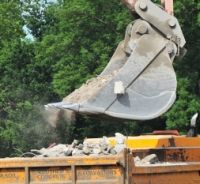

A legislative resolution on a new Waste Directive has now been issued. It sets out the final text of the proposed Directive, ahead of its actual adoption. In particular, the new Directive will have provisions on by-products, end-of-waste, Van de Walle, recycling, recovery, and use of waste as a fuel.
The European Court in Van de Walle v Texaco Belgium SA (Case C-1/03 [2005] Env LR 24) applied the previous Framework Directive on Waste (Directive 75/442/EEC) to contaminated land. It held that spilled hydrocarbons were waste and as far as contaminated soil was concerned held that, "The same classification as waste within the meaning of Directive 75/442/EEC applies to soil contaminated as a result of an accidental spill of hydrocarbons." The judgment as to contaminated soil being waste caused considerable disquiet and has put the law into much disarray.
It was hoped the new Waste Directive would provide clarity on the issues arising out of the case. In the original text of the draft Directive, a further exception to the definition of waste was to be included which would say that unexcavated contaminated soils were not waste. However, this has been deleted meaning that contaminants and any surrounding contaminated soils could still be treated as waste despite remaining in-situ in the ground. The final text includes an exclusion for unexcavated contaminated soils, but the exclusion is now outright and is no longer dependent on these materials being covered by other EU legislation, namely the proposed Soils Directive.
A further exclusion from the Directive's scope will be the on-site re-use of materials excavated as part of construction activities. It has been agreed that "uncontaminated soil and other naturally occurring material excavated in the course of construction activities where it is certain that the material will be used for the purposes of construction in its natural state on the site from which it was excavated" are to be excluded. However, this only extends to the on-site re-use of such materials rather than setting out the circumstances in which off-site re-use of "clean" excavated materials could also be permissible.
It also states that waste will cease to be waste once it has undergone a recovery operation that complies with certain "end of waste" criteria. However, measures relating to the adoption of such criteria and specifying of the waste, are to be adopted at a later stage. It provides that end-of-waste specific criteria should be considered at least for aggregates, paper, glass, metal, tyres and textiles.
Further, the final agreed text contains provisions covering the regulation of by-products. It sets out the circumstances in which a substance or object, resulting from a production process, the primary aim of which is not the production of that item, may be regarded as not being waste but as a by-product.
However, measures to determine the criteria to be met for specific substances or objects to be regarded as a by-product and not as waste, are again to be adopted later.
For more information, see: